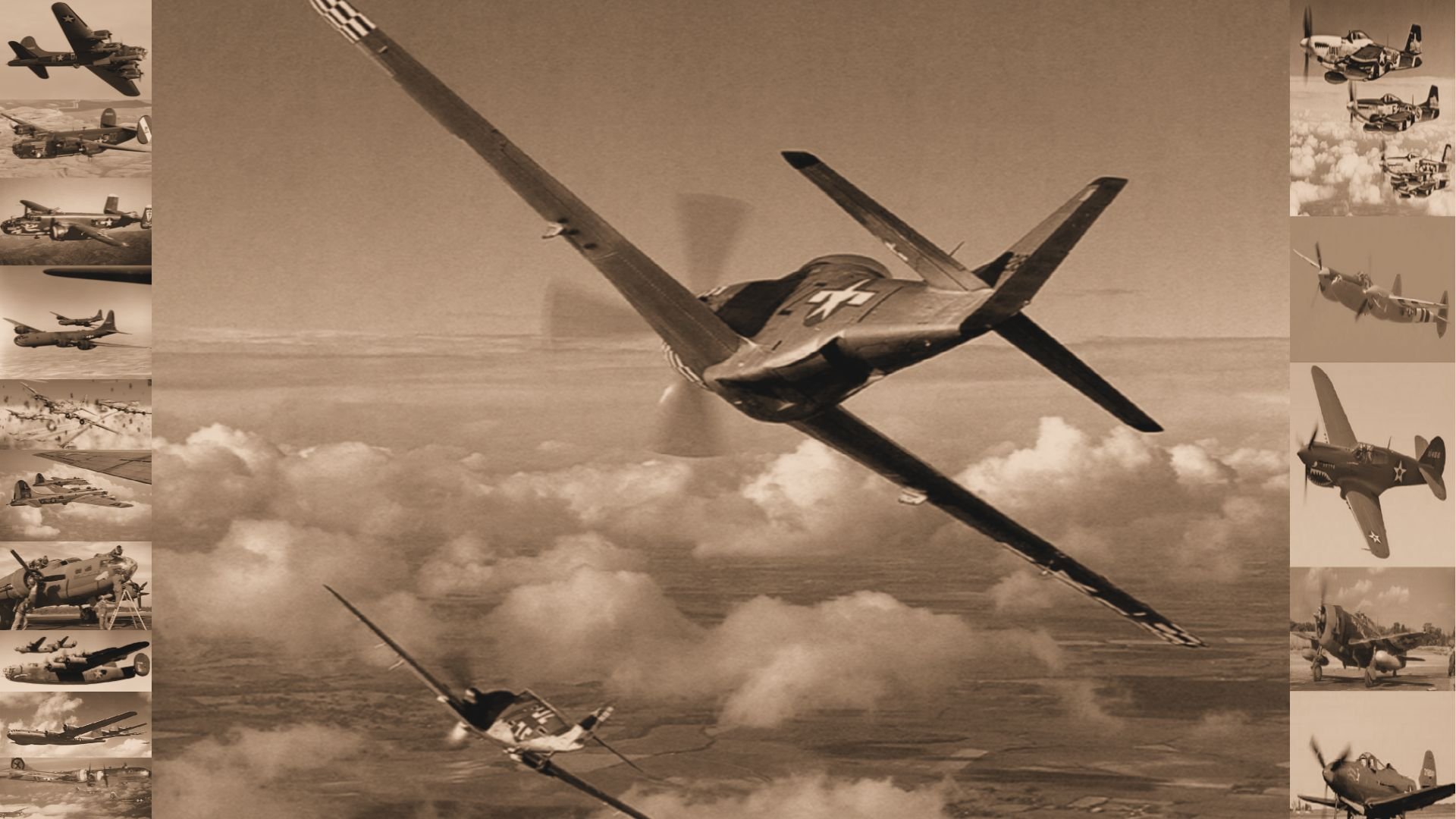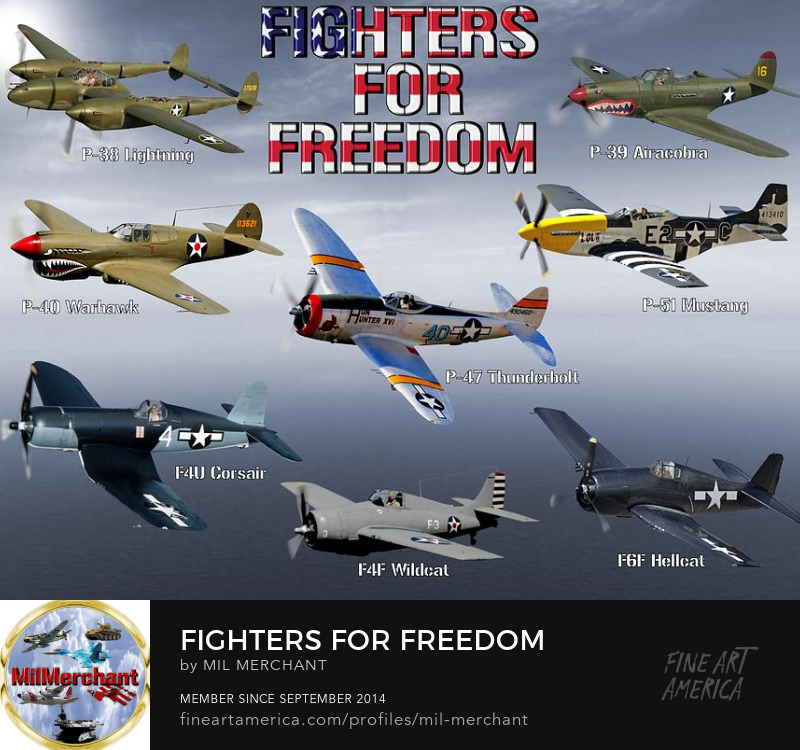 Curtiss P-36 'Hawk'
Curtiss P-36 'Hawk'
The Curtiss P-36 Hawk(Hawk Model 75), was an American-designed and built fighter aircraft of the 1930s and 40s. A contemporary of both the Hawker Hurricane and the Messerschmitt Bf109, it was one of the first of a new generation of combat aircraft being a sleek monoplane design making extensive use of metal in its construction and powered by a powerful radial engine. It was the fore runner of the famous P-40 'Warhawk'.
Development
At the beginning of the 1930s, the USAAC had realized that the development of the biplane could not be developed any further and it was time to progress to monoplanes as pursuit aircraft. With the introduction of the Boeing B-9 monoplane bomber in 1931, the USAAC was faced with the fact that its new generation of bombers were faster than its current stable of biplane fighters. The Boeing P-26 'Peashooter' was first step of this concept, as it was the first all metal, pursuit monoplane, for the USAAC. However, it was conservative in design, with fixed gear and external wing bracing and though the P-26 would prove to be a gallant fighter against Japanese aircraft, in the Philippines, at the beginning of World War II, it was for the most part, an interim aircraft. In 1935, Curtiss, Seversky, and Northrop submitted aircraft for a USAAC design competition fly-off. These aircraft would usher in a completely new era of American fighter designs and concepts with enclosed cockpits, retractable landing gear, all metal construction, hydraulic systems and more powerful engines. The Curtiss Model 75 was a private venture by the company, designed by former Northrop Aircraft Company engineer Don R. Berlin. The first prototype constructed in 1934, featured all-metal construction with fabric-covered control surfaces, a Wright XR-1670-5 radial engine developing 900 hp (670 kW). The prototype first flew on 6 May 1935, reaching 281 mph (452 km/h) at 10,000 ft (3,000 m) during early test flights. On 27 May 1935, the prototype was flown to Wright Field, Ohio, to compete in the USAAC fly-off for a new single-seat fighter but the contest was delayed because the Seversky entry crashed on the way to the contest. Curtiss took advantage of the delay to replace the unreliable engine with a Wright XR-1820-39 Cyclone producing 950 hp (710 kW) and to rework the fuselage, adding the distinctive scalloped rear windows to improve rear visibility. The new prototype was designated Model 75B with the R-1670 version retroactively designated Model 75D. The fly-off finally took place in April 1936. On 16 June 1936, Curtiss received an order from USAAC for three prototypes designated Y1P-36, even though Seversky had won the competition and had an order for 77 P-35 aircraft. However, the USAAC wanted a backup fighter in the event of problems with delivery from Seversky.
Back to Top
Into Service
USAAC
The first production of the P-36s was delivered to the 20th Pursuit Group in Louisiana in April 1938. The P-36s had been delivered to Hawaii in February 1941 by being loaded on the carrier the USS Enterprise in California, then in a first for the USAAC, flown off the carrier's deck by the P-36's U.S. Army Air Corps pilots when the Enterprise neared the coast of Hawaii. The only combat by U.S.-operated P-36s took place during the Pearl Harbor attack. Five of the 39 P-36A Hawks at Pearl Harbor, delivered previously by the USS Enterprise, were able to take off during the attack and were credited with shooting down two Japanese Mitsubishi A6M2 Zeros for the loss of one P-36, among the first U.S. aerial victories of World War II. During its service in the US Air Force, the P-36 showed numerous problems which affected the over-all performance of this WW2 aircraft. By the time these problems were corrected, the P-36 design was already considered obsolete even during the early part of the Second World War and was relegated to training units and overseas detachments at Albrook Field in the Canal Zone, Elmendorf Field in Alaska, and Wheeler Field in Hawaii.
Back to Top
France
The French government negotiated for the eventual delivery of 300 units even before the initial production, starting with 100 aircraft and 173 engines ordered immediately. The first Hawk 75A-1 (or H75A-1 n°1) arrived in France in December 1938 and began entering service in March 1939. Few months later, this aircraft was part of 'Groupe de Chasse II/5 La Fayette' (heir of the Escadrille Lafayette that fought in France during WWI) and was wearing the famous Sioux Head on its fuselage side. After the first few examples, aircraft were delivered in pieces and assembled in France by the Société Nationale de Constructions Aéronautiques du Centre. Officially designated as the Curtiss H75-C1. On September 20, Sergeant André-Armand Legrand, pilot of the H75A-1 n°1 in the Groupe de Chasse II/5 La Fayette was credited of the first Allied air victory of World War II on the Western front with shooting down one Messerschmitt Bf 109E of the Luftwaffe 3/JG53, over Oberhern. During 1939-1940, French H75 pilots claimed 230 air to air kills (of a total of 1,009 air to air kills by the French Air Force during the 1939-40 time period) and 81 probable victories in H75s against only 29 aircraft lost in aerial combat. While only 12.6% of the French Air Force single-seater fighter force the H75 accounted for almost a third of air-to-air kills during the 1940 Battle of France. During Operation Torch in North Africa, Vichy French H75s fought against U.S. Navy F4F 'Wildcats', losing 15 aircraft while shooting down seven American aircraft.
Back to Top
RAF
After the Fall of France, the Royal Air Force (RAF) came into possession of 229 Hawks that came from the diverted shipments and from escaped pilots. Although the RAF already had their Supermarine Spitfire MK I fighter, they still decided to use the Hawks, which they designated as Mohawks. Though the RAF had sufficient Spitfires and Hurricanes, they found the P36 a pleasant plane to fly, with good manouverability and excellent pilot view and subsequently found a use for the P-36 in the China Burma India(CBI) theatre of war fighting the Japanese.
Back to Top
Finland
The P-36 Hawk would also find its way to the Finnish Government as Germany agreed to sell the captured French Hawks to the country. The P-36 Hawk was so loved by the Finnish Air Force that they affectionately nicknamed the plane 'Sussu', (eng: 'Sweet Heart'). The Finnish Hawks were initially armed with either four or six 7.5mm machine guns. While sufficient during the early phase of the Continuation War, the increasing speeds and armor of Soviet aircraft soon showed this armament was not powerful enough. From 1942, the State Aircraft Factory replaced the fuselage machine guns with either one or two .50 in (12.7 mm) Colt machine guns and installed two or four .303 in (7.7 mm) Browning machine guns in each wing. The 12.7mm Berezin UB or LKk/42 heavy machine guns were also used. The installation of heavier armament did not change the very good flying characteristics of the fighter, but the armament was much more effective against Soviet aircraft. The Finnish Hawks were also equipped with Revi 3D or C/12D gunsight.
Back to Top
China
The prototype of the Hawk 75H, a simplified version with fixed landing gear, like the 75O was eventually sold to the Chinese Nationalist government who presented it to Claire L. Chennault for personal use. China also received two similar demonstrators, the Hawk 75Q. They also used a number of simplified Hawk 75Ms against the Japanese. The Hawk 75A-5 was built under license in China, but production was later moved to India, and these aircraft were absorbed into the RAF as the Mohawk IV.
Other Countries
The P-36(Hawk 75) was also used by a number of smaller nations airforces including Argentina, Peru, Norway, Thailand and Portugal. Some 215 (P-36) plus 900 export Hawk 75 variants were built before production was terminated by Curtiss, though it is not known how many were built in China or India.
Back to Top




